Valentine, Nebraska 作者: 来源: 发布时间:2021-05-24
I.Population and Area
₋Area
Land: 6.82 km2 (2.63 sq mi)
₋Population (2018)
Total: 2,737
Density: 396.54/km2 (1,026 /sq mi)
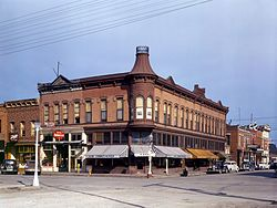
II.Natural Geography
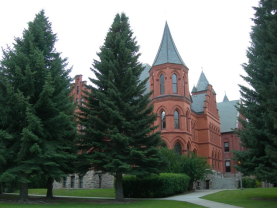
Historic town centre
-Its motto is ‘small town, big adventure’ and Valentine, a small community located just a few miles from the South Dakota border, certainly delivers what it promises. Just east of town is the stunning Fort Niobrara National Wildlife Refuge, nearly 20, 000 sprawling acres of forest and grassland, which is home to hiking trails and a number of elk, bison and greater prairie chicken while a trip to nearby Smith Falls State Park allows visitors to discover Nebraska’s highest waterfall. In the town itself, attractions include the Valentine Fish Hatchery, which raises fish including largemouth bass and bluegill, and the Cherry County Historical Society Museum dedicated to pioneer era culture of the region.
III.ECONOMY
-The economy of Valentine, NE employs 1.43k people. The largest industries in Valentine, NE are Retail Trade (260 people), Health Care & Social Assistance (223 people), and Educational Services (184 people), and the highest paying industries are Professional, Scientific, & Technical Services ($101,719), Other Services Except Public Administration ($60,433), and Transportation & Warehousing, & Utilities ($57,708).
-Median household income in Valentine, NE is $50,729. Males in Valentine, NE have an average income that is 1.37 times higher than the average income of females, which is $42,865. The income inequality in Valentine, NE (measured using the Gini index) is 0.446, which is lower than the national average.
-Website: https://datausa.io/profile/geo/valentine-ne
IV.Industrial Characteristics
-The most common employment sectors for those who live in Valentine, NE, are Retail Trade (260 people), Health Care & Social Assistance (223 people), and Educational Services (184 people). This chart shows the share breakdown of the primary industries for residents of Valentine, NE, though some of these residents may live in Valentine, NE and work somewhere else. Census data is tagged to a residential address, not a work address.
-Compared to other places, Valentine, NE has an unusually high number of Agriculture, Forestry, Fishing & Hunting (5.57 times higher than expected), Arts, Entertainment, & Recreation (1.98 times), and Retail Trade (1.6 times) industries.
-Website: https://datausa.io/profile/geo/valentine-ne
V.Attractions
1.Smith Falls State Park
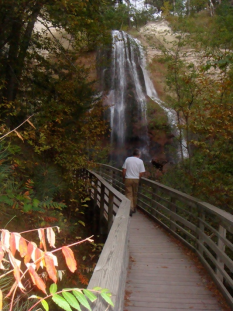
-Scenic Smith Falls State Park is home to Nebraska’s highest waterfall, also called Smith Falls. The state park is a popular destination for campers, as well as canoers, kayakers, tubers and others who visit the area to experience the beautiful Niobrara River, a National Scenic River. Many outfitters use the park as a take-out spot, which make it a convenient camping site for those planning to paddle or float the river.
-Smith Falls is named for Frederic Smith, who filed the first homestead patent on the land that encompasses the falls. The site became a state park in 1992. Not only is the land home to the beautiful falls, it is also an area of biological significance where several ice age species can still be found.
-Address: 90159 Smith Falls Rd, Valentine, NE, 69201-1615
-TEL: +1 402-386-1306
-Website: http://outdoornebraska.gov/smithfalls/
-Email: NGPC.smith.falls@nebraska.gov
2.Cowboy Trail
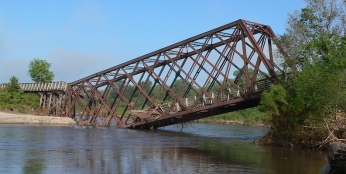
₋Along the foothills of Alberta’s Rocky Mountains is a narrow band of mixed forests and grasslands known for its moderate climate, a wide variety of wildlife species and broad ecological diversity. This attracted First Nations peoples to the area hundreds of years ago. Alberta ranching families first settled the territory in the 1880s and transformed the rolling grasslands into cattle country.
₋Today, communities along this corridor are linked together by The Cowboy Trail, a ribbon of pavement extending form Cardston to Mayerthorpe. The Old West is still evident in the art, history, food, hospitality, and culture of the foothills residents. Along the way, you’re likely to see cowboys out herding cattle, sometimes right along the highway, and families out for a horseback ride.
₋From Cochrane or Longview you can turn west into the heart of the Rocky Mountains to experience Kananaskis Country or Banff National Park. Expect to be overwhelmed by the rugged mountain scenery and the pristine wilderness literally at your doorstep.
₋There’s plenty to do along The Cowboy Trail. Stay at a guest ranch or working ranch. Experience a trail ride with an outfitter into some of Alberta’s prettiest country. Take in a rodeo, cowboy festival or a pow-wow for a day. The western spirit comes alive in the small communities along the trail with special cowboy-flavoured events.
₋Enjoy western hospitality up close and become part of the community while you enjoy a pancake breakfast. Watch a small-town parade, shop for local crafts and western antiques, or cheer during a rodeo. Listen to poets celebrate the western way of life. Watch native dancers move to the beat of a drum. Stay an extra night at a bed-and-breakfast and watch dawn break on the eastern slopes.
₋Now is the time to saddle up and drive The Cowboy Trail!Nestled between the Rocky Mountains and the Canadian prairie, in the high ranching country of Alberta, is the historic Cowboy Trail. This scenic route along highway 22 through Canada’s Rocky Mountain Foothills features horseback trail rides, farm and ranch vacations, guest ranches, western themed attractions, accommodations, adventures, historic sites and western themed shopping.
₋This 700 km stretch of pavement is the source for western vacations and adventures. Stay at a guest ranch or working ranch at one of our farm and ranch vacations. Experience a horseback trail ride or pack trip with an outfitter into some of Alberta’s prettiest country. Take in a rodeo, festival or a pow-wow for a day. Visit one of our many world class attractions. Stay in a western hotel, motel, or pristine wilderness campground. From Cochrane or Longview you can turn west into the heart of the Rocky Mountains to experience Kananaskis Country or Banff National Park. Expect to be overwhelmed by the rugged mountain scenery and the pristine wilderness literally at your doorstep. To experience the real west, please contact any of our preferred suppliers on this web site. For custom travel arrangements, one of our specialty Tour Operators would be pleased to assist you.
₋Attractions:
Don Begg Studio West Bronze Art Foundry
Rocky Mountain House National Historic Site
Cypress Hills Destination Area
₋Outfitters &Trail Rides
Historic Reesor Ranch
Moose Mountain Horseback Adventures
Anchor D Guiding &Outfitting Ltd.
₋Address: 15 South Montana Street, Dillon, MT 59725
₋TEL: 406-683-5027
₋Email: bvhdmuseum@hotmail.com
-Website: https://www.thecowboytrail.com/
3.Fort Niobrara National Wildlife Refuge
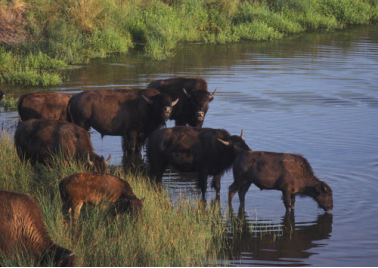
-Fort Niobrara NWR will strive to preserve, restore, and enhance the exceptional diversity of native flora and fauna and significant historic resources of the Niobrara River Valley and Sandhills of Nebraska for the benefit of present and future generations of Americans.Fort Niobrara NWR habitat management goals will seek to maintain a healthy Refuge environment that will provide opportunities for visitors to enjoy wildlife-dependent uses of the Refuge in a natural setting. Interpreting a unique assemblage of habitats, wildlife and the Refuge’s historical heritage, as well as improving facilities will enhance the visitor’s experience while protecting the cultural integrity of the area. To meet these challenges, the Service will seek partnerships with other agencies, interest groups, landowners, and local communities. These efforts will result in greater protection of wildlife, fish, and plant resources throughout north-central Nebraska.
-Seasons of Wildlife
Spring
Spring is a time of renewal and regeneration. In April and May, male Sharp-tailed Grouse and Greater Prairie-Chickens display on courting areas known as a lek. They attract females with their dancing, colorful displays, and various noises. Whitetail and Mule Deer females deliver spotted fawns in the tall grasses and tree covered areas. Migratory birds such as ducks and many smaller birds arrive in their brightest plumage of the year. Cool season grasses quickly grow, bloom, and begin to set seed.
Summer
Summer is typically a time of growth. Young prairie chickens and grouse hatch from their eggs with a big appetite for insects and plants. The fawn deer grow amazingly fast as they nurse from the doe and begin to eat plants. Male deer grow new antlers which are covered with what looks like brown velvet. The bright colors on many of the birds fade as they complete their breeding and begin to raise young. Warm season grasses begin to grow during the warmer months and will produce seed by the end of summer.
Fall
Fall is a time for many plants and animals to get ready for winter. Young prairie chickens and grouse finish growing new feathers. These will keep them warm and flying through the winter. The male deer rub the velvet off their antlers. They will use these polished antlers to fight for females to breed in November. The deer will all eat plenty to build a fat supply which will be crucial to surviving the cold winter. The migratory birds fly south to warmer climates with more dependable food supplies. Many cool season grasses will start to grow again and put energy into their roots. This will give them a good start again next spring. Grass seeds are moved about by animals, wind and water.
Winter
In winter the days are shorter and the nights are longer. The weather turns cold and snow often blankets the ground. The prairie chickens and grouse spend their time searching out food, quite often eating poison ivy or cedar berries. The female deer gestate new fawns while their fawns born last spring stay with them through the winter. The male deer loose the antlers that they grew so quickly last summer. New migratory birds arrive from areas to the north if winter conditions get too tough for them there. The grasses are mostly dormant, but some species will take advantage of occasional warm days to take in some sunlight and grow just a bit.
-Website: https://www.fws.gov/refuge/fort_niobrara/
VI.History
-Valentine was founded in 1883 when the Sioux City and Pacific Railroad was extended to that point. It was named for Edward K. Valentine, a Nebraska representative.
-As late as 1967, Valentine was split between two time zones. As described in one news report, "The mountain and central time zones meet at the center of Main Street, so an hour separates the two curb lines." According to the report, when clocks were required to be set back one hour for daylight saving time, Valentine's post office (which was in the central zone) split the difference and turned back its clock by only half an hour.
-Valentine participates in an annual re-mailing program where thousands of pieces of mail flow into the local United States Post Office so that they can be re-mailed with a special Valentine's Day postmark and verse.
-In 2007, National Geographic Adventure magazine included Valentine in its list of the best ten adventure towns and cities.
-In the Lakota language, Valentine is known as Oínažiŋ or Mnináȟaȟa Otȟúŋwahe, meaning "station stopping place" or "water and waterfall city".
-Website: https://en.wikipedia.org/wiki/Valentine,_Nebraska
VII.Other Information
-Notable people
oJames Dahlman, Omaha mayor from 1906 to 1930.
oClayton Danks, model of the Wyoming state symbol of the cowboy on a bucking horse, homesteaded near Valentine.
oPatrick Deuel, formerly one of the world's fattest people.
oRebecca Donaldson, fictional character on Full House, states that her hometown was Valentine.
oDeb Fischer, U.S. Senator, operates a ranch near Valentine.
oEdward Day Cohota was a Chinese born and an ethnic Chinese veteran who fought in American Civil War and later served thirty years in the army.
VIII.Contact Information
₋Government
Mayor: Kyle Arganbright
